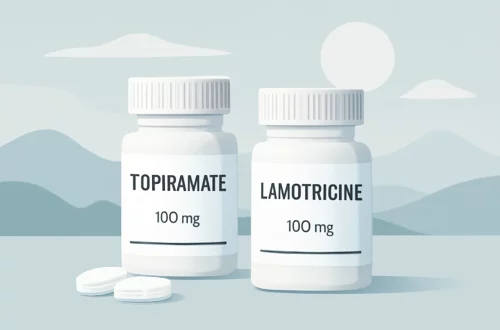
Zolpidem vs Eszopiclone: Which Sleep Aid is Right for You?
Zolpidem and eszopiclone are two commonly prescribed medications used to treat sleep disorders, particularly insomnia. As sleep-related issues continue to affect millions of people worldwide, understanding the differences, benefits, and drawbacks of these medications becomes increasingly important. Both drugs belong to a class of medications known as sedative-hypnotics, which work by influencing neurotransmitters in the brain to promote relaxation and sleep. However, despite their similar purposes, zolpidem and eszopiclone differ significantly in their mechanisms of action, side effects, and ideal usage scenarios.
The growing prevalence of sleep disorders highlights the need for effective treatment options. Chronic insomnia can lead to a myriad of health issues, including anxiety, depression, and cognitive impairment. In this context, many individuals find themselves turning to prescription medications as a means of regaining restful sleep. While zolpidem and eszopiclone are often seen as go-to solutions, it’s essential to approach their use with a thorough understanding of their properties and effects.
This article aims to delve into the characteristics of zolpidem and eszopiclone, exploring their similarities and differences, potential side effects, and the considerations one should keep in mind when choosing between these two medications.
Zolpidem: An Overview
Zolpidem is a non-benzodiazepine sedative that primarily targets the GABA-A receptor in the brain. It is most commonly prescribed for short-term management of insomnia, particularly for those who have difficulty falling asleep. Zolpidem works quickly, with effects typically beginning within 15 to 30 minutes after ingestion, making it ideal for individuals who struggle with sleep onset.
One of the primary advantages of zolpidem is its relatively short half-life, which ranges from two to three hours. This means that while it can effectively induce sleep, its effects diminish fairly quickly, reducing the risk of residual drowsiness the following day—a common concern with longer-acting sleep medications. Patients often report a swift transition into sleep, which can be particularly beneficial for those who have a regular sleep schedule and need to wake up early.
However, zolpidem is not without its drawbacks. Some users experience side effects, including dizziness, headache, and gastrointestinal issues. More severe side effects can occur, such as complex sleep behaviors, including sleepwalking, sleep-driving, or other activities performed while not fully awake. These incidents can pose serious risks to the individual and those around them. Additionally, there is a potential for dependency, particularly with prolonged use, as the body may become reliant on the medication for sleep.
It’s crucial for individuals considering zolpidem to engage in an open dialogue with their healthcare provider. This conversation should encompass the drug’s suitability for their specific circumstances, its potential interactions with other medications, and any underlying health conditions that may affect its use.
Eszopiclone: An Overview
Eszopiclone, like zolpidem, is a non-benzodiazepine sedative-hypnotic that is used to treat insomnia. It is unique in that it is the first sleep medication approved for long-term use, unlike many of its counterparts which are primarily prescribed for short-term treatment. Eszopiclone acts on the GABA-A receptor but has a longer half-life compared to zolpidem, typically ranging from six to nine hours. This characteristic can make it beneficial for individuals who struggle with both sleep onset and sleep maintenance.
The effectiveness of eszopiclone in promoting sleep and its ability to help patients stay asleep throughout the night make it a versatile option for those with insomnia. Many users report improved sleep quality and a reduction in nighttime awakenings. Furthermore, eszopiclone has been studied extensively, leading to a solid understanding of its safety profile and efficacy.
Despite these advantages, eszopiclone is not free from side effects. Common adverse reactions include a bitter taste, dry mouth, and dizziness. As with zolpidem, there is also a risk of complex sleep behaviors. Additionally, some patients may experience next-day sedation, which could impact their ability to perform daily tasks safely.
When considering eszopiclone, it is essential for patients to discuss their medical history with their healthcare provider. This medication may not be suitable for individuals with certain medical conditions or those taking specific medications that could interact adversely.
Comparative Analysis: Zolpidem vs. Eszopiclone
When comparing zolpidem and eszopiclone, several factors come into play. Both medications serve the same primary purpose—addressing insomnia—but they vary in their duration of action, side effects, and suitability for different patient populations.
Zolpidem is often preferred for patients who primarily struggle with sleep onset due to its rapid action and shorter duration. It is commonly used for those who need to fall asleep quickly but do not typically have issues with maintaining sleep throughout the night. However, its short half-life can be a limitation for those who wake up frequently during the night, as it may not provide sufficient coverage for extended periods of sleep.
In contrast, eszopiclone’s longer half-life makes it a more suitable option for individuals who experience both difficulty falling asleep and staying asleep. It provides a more sustained effect, which can lead to improved overall sleep quality. However, this extended action can also increase the likelihood of next-day sedation, which is a consideration for those who need to maintain alertness during the day.
Ultimately, the choice between zolpidem and eszopiclone should be tailored to the individual’s specific sleep patterns, lifestyle, and health considerations. Consulting with a healthcare provider is essential to determining the most appropriate treatment plan.
Considerations and Best Practices for Use
When using either zolpidem or eszopiclone, it’s essential to follow best practices to minimize potential risks and enhance the effectiveness of the medication. First and foremost, these medications should only be used as prescribed by a healthcare professional. Self-medicating or altering the dosage without professional guidance can lead to adverse effects and dependency.
Patients should also consider implementing good sleep hygiene practices alongside medication use. This includes maintaining a consistent sleep schedule, creating a relaxing bedtime routine, and ensuring a comfortable sleep environment. These practices can significantly improve sleep quality and may reduce the need for medication over time.
Furthermore, individuals should avoid consuming alcohol or other sedatives while taking these medications, as this can increase the risk of severe side effects and complications. Regular follow-up appointments with a healthcare provider are crucial for monitoring the effectiveness of the medication and making necessary adjustments to the treatment plan.
Finally, it is essential to recognize that both zolpidem and eszopiclone are intended for short-term management of insomnia. Prolonged use can lead to tolerance and dependence, making it vital to explore alternative therapies or lifestyle changes that can support better sleep in the long term.
*This article is not intended as medical advice. Always consult a healthcare professional for concerns regarding sleep disorders or the use of medications.*




